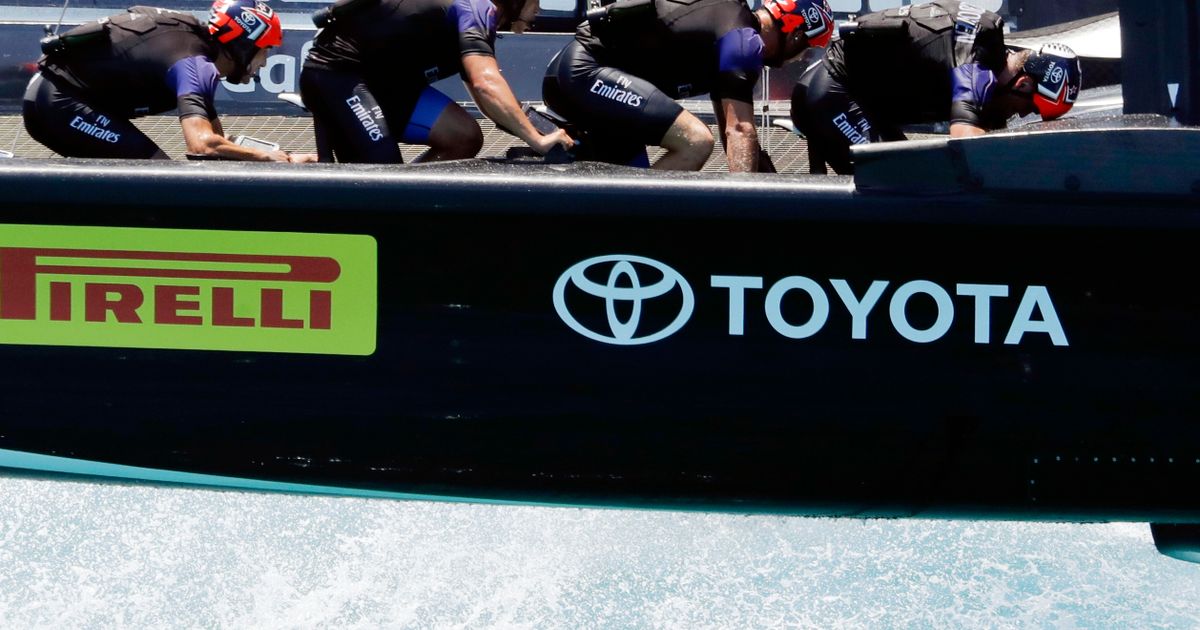
Pedal power is returning to the America’s Cup.
Two-time defending champion Emirates Team New Zealand has added a new group of elite athletes, including two cyclists, to help provide the immense amount of power required for the hydraulics that control various systems on the foiling AC75 sloops that will be sailed in the 2024 regatta in Barcelona.
The Kiwis first debuted the “cyclors” during the 2017 America’s Cup, using cyclists pedaling stationary bikes to replace traditional grinders to power the hydraulic systems for trimming sails and controlling the foils on their 50-foot catamaran. That was just one of several technological breakthroughs that helped propel the Kiwis to a stunning upset of two-time champion Oracle Team USA.
Cyclors were banned from the last America’s Cup, when the AC75 monohulls replaced the catamarans, but are back because the crew size has been reduced from 11 to eight. It’s up to each team to decide whether to use grinders or cyclors, but the prevailing thinking is that four crewmen using their legs will provide more power than four crewmen using their arms.
The Kiwis have hired rower/cyclist Hamish Bond, a three-time Olympic rowing gold medalist; cyclist Louis Crosby; multi-sport athlete Dougal Allan; and rower Cameron Webster to go along with grinders from the last Cup and original cyclor Simon van Velthooven.
Each of the new recruits went through a tough selection process overseen by ETNZ trainer Kim Simperingham late last year.
“We had a really interesting week of cyclor testing for our existing sailing team as well as a list of potential new candidates, all of whom took their bodies to their absolute limits for the tests,” Simperingham said. “The two main physical qualities we were looking for are athletes that can sustain a really high-power output for the length of a race, up to about half an hour, and athletes that can also achieve really high peaks in power, that will be used for the maneuvers during races.”
The tests were a combination of short maximum power output tests as well as longer endurance tests as the Kiwis looked for athletes to get them through the next few years.
“What we found was the big guys have the power and endurance as opposed to the smaller guys with huge power-to-weight ratio who, although highly impressive, struggle to match the overall numbers that bigger guys can output which shows in many of the guys who have been selected,” Simperingham said.
Van Velthooven, will return to his familiar role alongside grinders Louis Sinclair, Marcus Hansen and Marius van der Pol from the last regatta. The grinders went through the testing as well, along with sailor Sam Meech who joined the team in 2022.
“It’s brutal. America’s Cups are hard so they put us through a hard test. It’s crucial to deliver the whole way through.” van Velthooven said.
“You sort of easily forget how much pain these little tests can put you through. So that’s a good check-in and reminder,” van der Pol said.
Flight controller Blair Tuke was involved in the selection process and is encouraged by the skill of the athletes.
“We have a really potent mix of America’s Cup and AC75 experience, fresh hungry talent and raw power which I am sure will set us up strongly by the time we are on the start line for the America’s Cup match,” Tuke said.
“To see what these guys are prepared to put themselves through in testing to qualify for the team has been really impressive and I have no doubt they will apply that same commitment to the whole team in the gym, in the shed and on the water throughout the campaign,” Tuke said.
The New York Yacht Club’s American Magic has been training with four cyclors aboard Patriot on Pensacola Bay for four months, said Terry Hutchinson, the president of sailing operations/skipper.
“The change in the rule drove the decision,” Hutchinson said. “The crews were reduced from 11 down to eight but they didn’t change the amount of power being used in the boat. Four guys using their arms are not the same as using their legs, so the rule change made it very easy. From there we’ve had to work on fine-tuning the athletes and finding them.”
Hutchinson said 10 athletes are competing for cyclor spots. The team will have eight or nine cyclors in order rotate fresh athletes through on days when there are multiple races.
___
Follow Bernie Wilson on Twitter at http://twitter.com/berniewilson